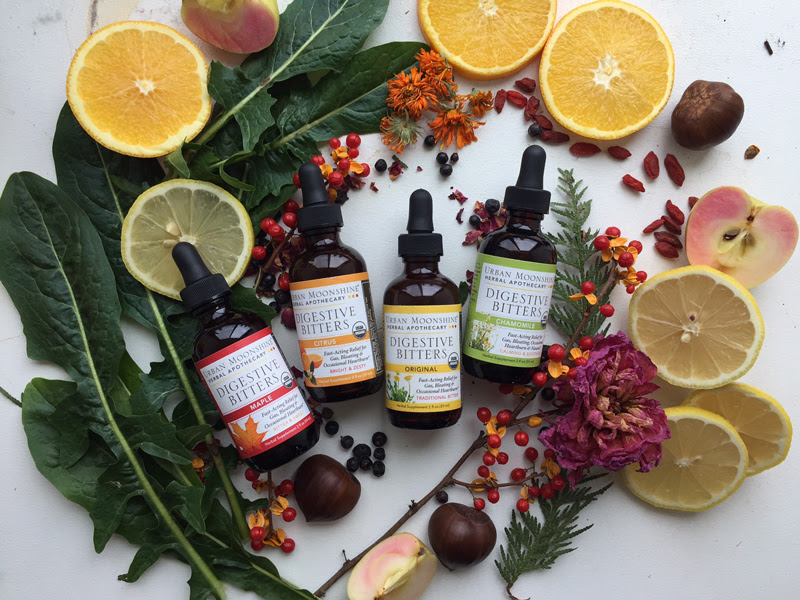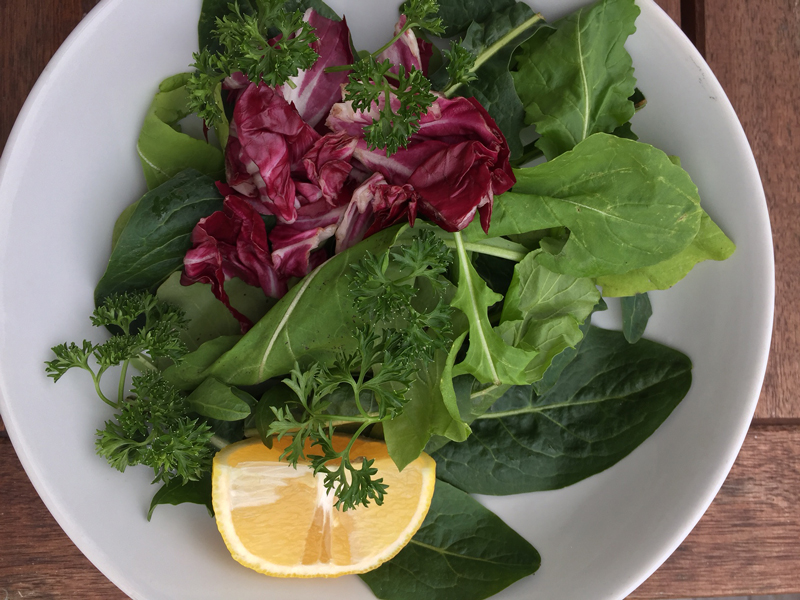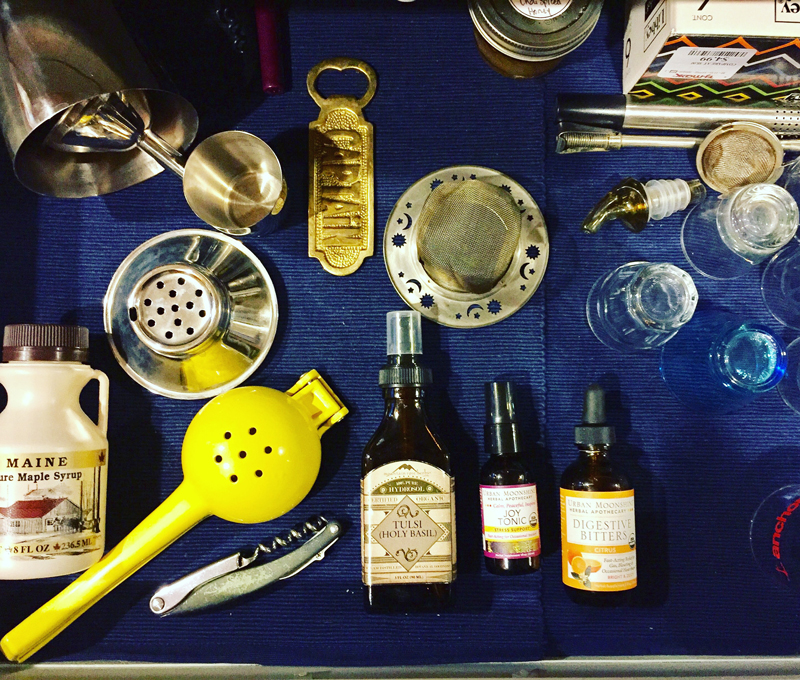By Aisling Badger
Republished from the Urban Moonshine Blog
 Abundant food, merriment, drinking and celebration are upon us: the holidays.
Abundant food, merriment, drinking and celebration are upon us: the holidays.
Enter the phase of the year where it is hard to say no to the daily treat left in the office break room, or the warm comforting smell of pie in the oven, the endless family feasts and time spent with loved ones. It is a time that we look forward to all year and however you celebrate, it is safe to say that feasting, eating, drinking and “desserting” are at an all-time high.
The holidays are known as the season of indulgence, and we should allow ourselves to partake in the merriment of eating together, because who wants to lose out on that?
Think about how much time goes into preparing a holiday meal–the chosen company, the aesthetic, the recipes and the traditions around them, the all too common feeling of overeating, and rightfully so! This time of year should be enjoyed and we should feel well doing it.
Great health is about balance. Body shaming and restricting food habits can dampen our mood and make the experiences less enjoyable, but there are ways to improve our health around the holidays, and thankfully they are easy habits that support these joyous traditions.
Among the best known herbal remedies used at this time of feasting are bitters. In our current food culture we have an overwhelming load of sugar, salt heavy and fatty processed foods available to us that fill our grocery stores and eventually our plate. While the flavor of bitterness has essentially vanished from the modern palate, which may very well be contributing to widespread problems with digestive health and appetite control, this season shouldn’t be about restricting, or binging and then detoxing. No matter your eating habits and how they fluctuate over the holidays, we can all benefit from bitters!
We should eat consciously and fill our plates with a variety of foods that offer nutritional support as well as flavor. The bitter flavors effortlessly creates balance within our diet, you just have to learn to love it! And it’s not so hard to do.
The bitter flavor is strikingly different in the lineup of sweets and salty, which are the flavors the brain associates with pleasure; but we promise over time you will get used to it, and soon come to love and depend on it. We need the complexity of flavors to help balance an overload of delectable flavors and to challenge our digestive system.
Digestion happens in the small intestine, where we absorb the nutrients from our food. However, this is not where it starts. There are mechanical and chemical aspects of digestion that play equally important roles in the breakdown and absorption of our food. The stomach is where peristalsis happens- the muscle process of breaking down food into a liquid in order for our small intestines to absorb through cell walls. The first step is in the mouth, where we chew and break down the food before it enters into our stomach. This step within the mouth is where saliva is produced (a chemical process) that aids in jump starting our digestive system and getting it ready to eat. The most appropriate time to take bitters is 15 minutes before a meal, so we get the digestive processes started. But if you forget, they are also helpful after meals because of the carminative herbs, which help to soothe occasional gas and bloating. Taking bitters also helps to balance out cravings and bitters make for great healthy gifts as you go from house to house.
While using bitters doesn’t have to dampen the party, think about incorporating the tradition of bringing bitters to the table as you feast this holiday season. You can get quite creative with the way in which you use bitter flavors, and we challenge you this holiday season to bring one aspect of bitterness to the table.
Here are a few of our favorite suggestions:
Bitters aperitif | A traditional Italian beverage, taken before meals to increase digestive juices in order to thoughtfully and fully enjoy a meal. In Italy, eating is about the enjoyment of quality genuine food and drink. It is also about eating and drinking in a way that will aid in proper digestion to enhance the overall experience.
Take a dash of bitters and pour over ice, then pour a bit of seltzer into the glass and cheers with family 15 or so minutes before a meal. Or try a shot of Campari or Aperol over ice with a dash of bitters and seltzer.
Traditional Bitter cocktails | Negroni or Manhattan
The Negroni cocktail is made of one part gin, one part vermouth rosso (red, semi-sweet), and one part Campari, garnished with orange peel and is considered an apéritif.
A Manhattan is a cocktail made with whiskey, sweet vermouth, and bitters.
These are great ones to make and enjoy before meals with the company of good friends.
Bitter after meal tea | Chamomile, Dandelion, Ginger and Honey. Steep for 10-15 minutes and serve hot in sipping cups before desert. Simple, warm and adds ritual to a meal sequence.
Bitter ginger syrup for cocktails/mocktails or sipping | Using herbs like Gentian or Ginger in a syrup recipe that uses honey is such a great simple way of taking bitters. Try a teaspoon or two for any upset belly symptoms or add to cocktails throughout the night. It makes a great version of Gingerale when used with bubbly water, or enhances the flavor or a classic “Dark and Stormy”!
Bitter greens salad to cleanse the pallet. Use veggies like radicchio, arugula and dandelion greens. The refreshing crispness of greens with something simple like olive oil and lemon is a great way to add complexity of flavor to a meal. Even a small amount does the trick!
A lot of these recipes come from Urban Moonshine’s new book DIY Bitters–which explores the idea behind the palate and our taste, and offers many more recipes and ideas for ways to include bitters in your diet.
Pick up a copy today to have around for the holidays, or try out one of the simple recipes above.

